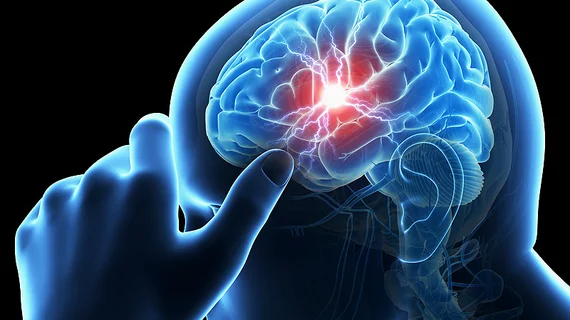A key way AI can improve care for stroke patients
Deep learning (DL) may be able to help healthcare providers predict how patients will respond to intravenous thrombolysis, according to a new pilot study published in Academic Radiology. This, the authors noted, would lead to better stroke care by improving the patient selection process.
“Intravenous thrombolysis in acute ischemic stroke results in significant functional improvements for some patients; however, not all patients who receive thrombolysis will benefit,” wrote author Stephen Bacchi, MBBS, of Royal Adelaide Hospital in Australia, and colleagues. “Additionally, thrombolysis exposes patients to significant risks, including intracranial hemorrhage and gastrointestinal bleeding. Therefore, the appropriate selection of patients for thrombolysis is vitally important, and additional methods to aid in the selection of such patients is an ongoing clinical need.”
Various DL models were tested with a study cohort of more than 200 patients who received thrombolysis. The average patient age was 70.3 years old, and more than 42% of the patients were female. Data was collected from existing databases from two hospitals in South Australia from 2009 to 2015.
A 24-hour National Institutes of Health Stroke Scale (NIHSS24) scale and 90-day modified Rankin scale (mRS90) were used to determine when the patient outcome was favorable. Of the study’s included patients, 53.4% had a favorite outcome by NIHSS24 criteria and 55.4% had a favorable outcome by mRS90 criteria.
For predicting a favorable outcome by NIHSS24 criteria, the combination of a convolutional neural network (CNN) and an artificial neural network (ANN) using both clinical data and noncontrast CT brain (CTB) data had the highest accuracy (0.71) and area under the ROC curve (0.70). That same CNN/ANN combination also had the highest accuracy (0.74) and area under the ROC curve (0.75) for predicting a favorable outcome by mRS90 criteria.
Bacchi and colleagues observed that these findings show how DL models “may aid in the prediction of thrombolysis outcomes.”
“The prediction of future clinical outcomes may be an appropriate gold-standard in the application of DL to multiple medical conditions,” the authors wrote. “This is the case because, if assessed objectively, future clinical outcome may be a clinically useful, reliable ground-truth that may be obtained noninvasively.”
The team did note that its research, being a pilot study, had a noticeably small sample size. Further research should include larger studies, they added, that take advantage of “larger, multicenter datasets and the incorporation of CT angiogram and CT perfusion imaging.”

